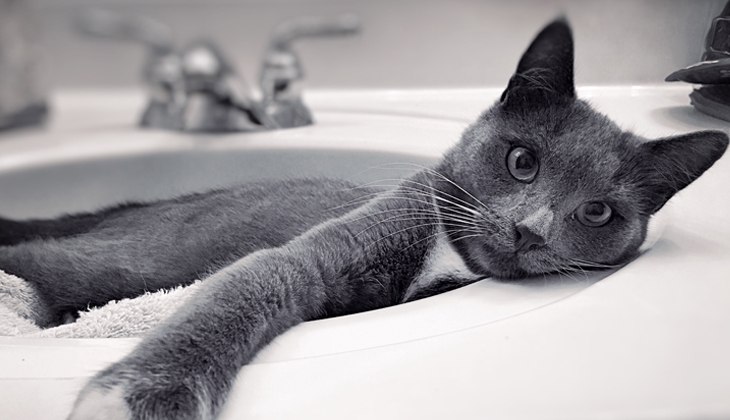
10 Amazing Facts About Your Cat
BEHAVIOUR & TRAVEL
30 May, 2019
READ 4 minutes
How well do you know your cat? Chances are you don’t know them nearly as well as you think. Cats are so much more than just a cuddly ball of fur; they are truly fascinating. Not only are cats great companions, but they are also incredibly interesting, from the tip of their nose to the end of their tail. Here are ten cat facts that may surprise you.
1. EACH CAT’S NOSE IS DIFFERENT, LIKE A FINGERPRINT
No two cats have the same nose. Each nose is unique to the individual cat. Guess you won’t be able to unlock your cat’s iPhone without their nose print!
2. A CAT’S “MEOW” IS USED TO COMMUNICATE WITH HUMANS
Despite popular belief, when a cat “meows” it is communicating with humans, not other cats. If your cat is meowing at you, he/she is most likely trying to get your attention. In fact, they communicate differently to each human – a different meow for each person!

3. CATS GROOM THEMSELVES FOR MORE THAN 1/3 THE TIME THEY’RE AWAKE
Talk about being squeaky clean! Grooming helps cats maintain healthy skin and hair, regulate their temperature, increase blood circulation, as well as removing loose hair and dirt.
4. SOME CATS EXPERIENCE SEPARATION ANXIETY
Some cats dislike being alone and show signs of separation anxiety when separated from someone with whom they share a strong bond. If your cat follows you around when you prepare to leave, cries or attacks objects after you have left your home, or is overexcited on your return, then it may be sad about you leaving. Separation anxiety can also cause physical signs such as reduced appetite, recurrent difficulties passing urine (known as idiopathic cystitis) or even vomiting.
Your vet can ensure that your cat has no medical problems and you can make sure that your cat has plenty to keep it amused when you are out.
5. CATS SMELL WITH THEIR MOUTHS
Cats have a small gland in the roof of their mouth, just behind their front teeth, that connects to their nose. When they want to take a good whiff of something, they open their mouth and may even look like they are smiling.

6. KITTENS REQUIRE HUMAN INTERACTION TO BOND
How a cat bonds to humans is partly determined by how they interact with humans as kittens. Kittens from 2 to 16 weeks old that are handled regularly are more used to people and less likely to run away. This is a critical period in a kitten’s development since it is the time that it leaves its mother and goes to a new home.
7. CATS EXPRESS LOVE WITH THEIR EYES
According to experts, cats express love by slowly blinking. Humans can respond with a long, calming gaze (this gives a whole new meaning to the statement: “gazing deeply into each other’s eyes.”)
8. PURRING MIGHT BE FROM PAIN
Purring helps cats self-soothe when they are in distress. Many people associate the soothing sound of purring with happiness, but it doesn’t always mean that a cat is happy. Cats also use purring to selfsoothe when they are anxious or in pain.
9. YOUR CAT MAY BE OLDER THAN YOU THINK
By the age of 1 year a cat is equivalent to a 15- to 17-year old teenager. Cats then age by at least 5 or 6 years per calendar year. This means that cats aged 11-14 years old are already seniors, with an age of 60-72 human years.
10.CATS HAVE EXCEPTIONAL HEARING
Did you know that cats can rotate their ears 180 degrees to help them pinpoint sounds? Not only that, but their cone-shaped ears actually amplify sound. That explains why the average cat hears 5 times as well as a human adult. Amazing, right?
Did you know your cat as well as you thought you did? We hope you enjoyed these fun cat facts as much as we did.
RECOMMENDED




